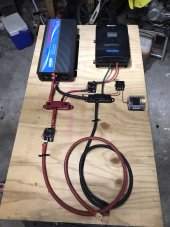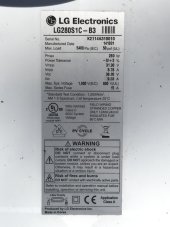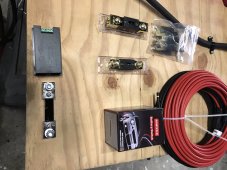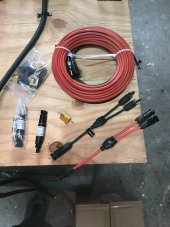I’m about ready to test this out. Maybe one of y’all experts can Let me know what I should change first. Be easy, it’s my first.
Its a Renogy Rover 60a controller. Giandel 3000w 24v inverter. 6 LG 280w panels and a chins 24v 100ah lifepo4 battery And a 10a 12v transformer. 2/0 battery to inverter wire and 6awg to controller. Called Renogy which stated that 80watts over on the panels is OK. I just have to set the controller parameters. I dont care for these breakers but they’re cheap and I can have several spares. I also have fuses but I like that I can trip these when needed. good or not?
Will run The garage first with a full size freezer and lights, then maybe on a friends houseboat.
oops, just saw the beginners and safety check sections, I guess this should be there. sorry, if I could move it I would.

Its a Renogy Rover 60a controller. Giandel 3000w 24v inverter. 6 LG 280w panels and a chins 24v 100ah lifepo4 battery And a 10a 12v transformer. 2/0 battery to inverter wire and 6awg to controller. Called Renogy which stated that 80watts over on the panels is OK. I just have to set the controller parameters. I dont care for these breakers but they’re cheap and I can have several spares. I also have fuses but I like that I can trip these when needed. good or not?
Will run The garage first with a full size freezer and lights, then maybe on a friends houseboat.
oops, just saw the beginners and safety check sections, I guess this should be there. sorry, if I could move it I would.

Last edited:





